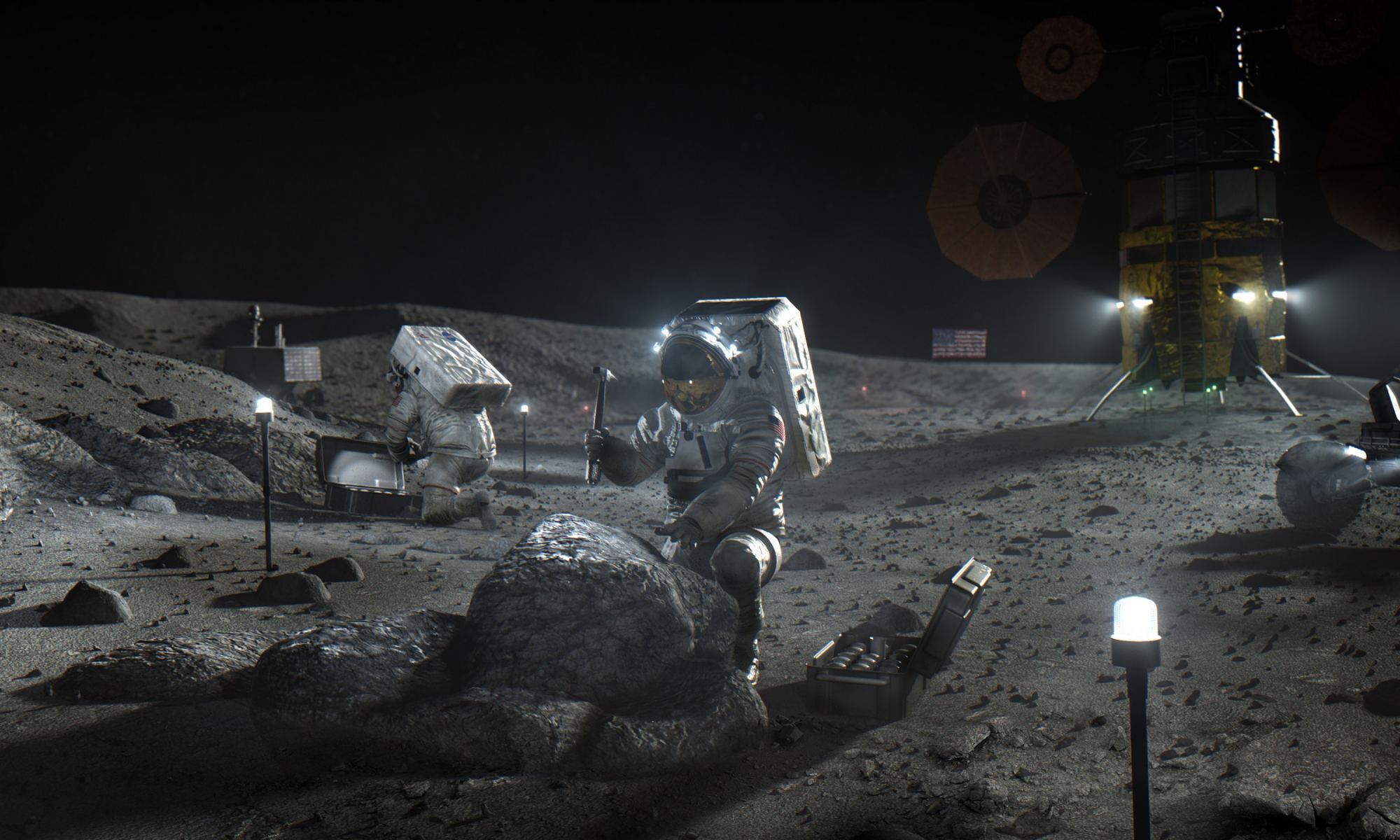Walking along on the surface of the Moon, as aptly demonstrated by the Apollo astronauts, is no easy feat. The gravity at the Moon’s surface is 1/6th of Earth’s and there are plenty of videos of astronauts stumbling, falling and then trying to get up! Engineers have come up with a solution; a robotic arm system that can be attached to an astronauts back pack to give them a helping hand if they fall. The “SuperLimbs” as they have been called will not only aid them as they walk around the surface but also give them extra stability while carrying out tasks.
Continue reading “Astronauts Could Deploy Extra Arms to Stay Stable on the Moon”Lunar Astronauts Will Need Easy Walking Trails Around the Moon's South Pole
Before this decade is out, NASA plans to return astronauts to the Moon for the first time since the Apollo Era and build the necessary infrastructure to keep sending them back. And they will hardly be alone. Alongside NASA’s Artemis Program, the European Space Agency also plans to send astronauts to the Moon and establish a permanent habitat there (the Moon Village), while China and Russia are working towards creating the International Lunar Research Station (ILRS). Numerous commercial space companies will also be there to provide crew transportation, cargo, and logistical services.
All of this will happen in the Moon’s southern polar region, a topographically complex region characterized by craters, permanently shadowed regions (PSRs), and undulating slopes. This terrain could prove difficult for crews conducting extravehicular activities (EVAs) away from landing sites and habitats. In a recent study, an international team of researchers used data from NASA’s Lunar Reconnaissance Orbiter (LRO) to create a detailed atlas of the region that accounts for all the traverses and descents. This atlas could prove very useful for mission planners as they select landing sites for future exploration.
Continue reading “Lunar Astronauts Will Need Easy Walking Trails Around the Moon's South Pole”Astronauts Could Dust off Themselves and Equipment on the Moon With an Electron Beam
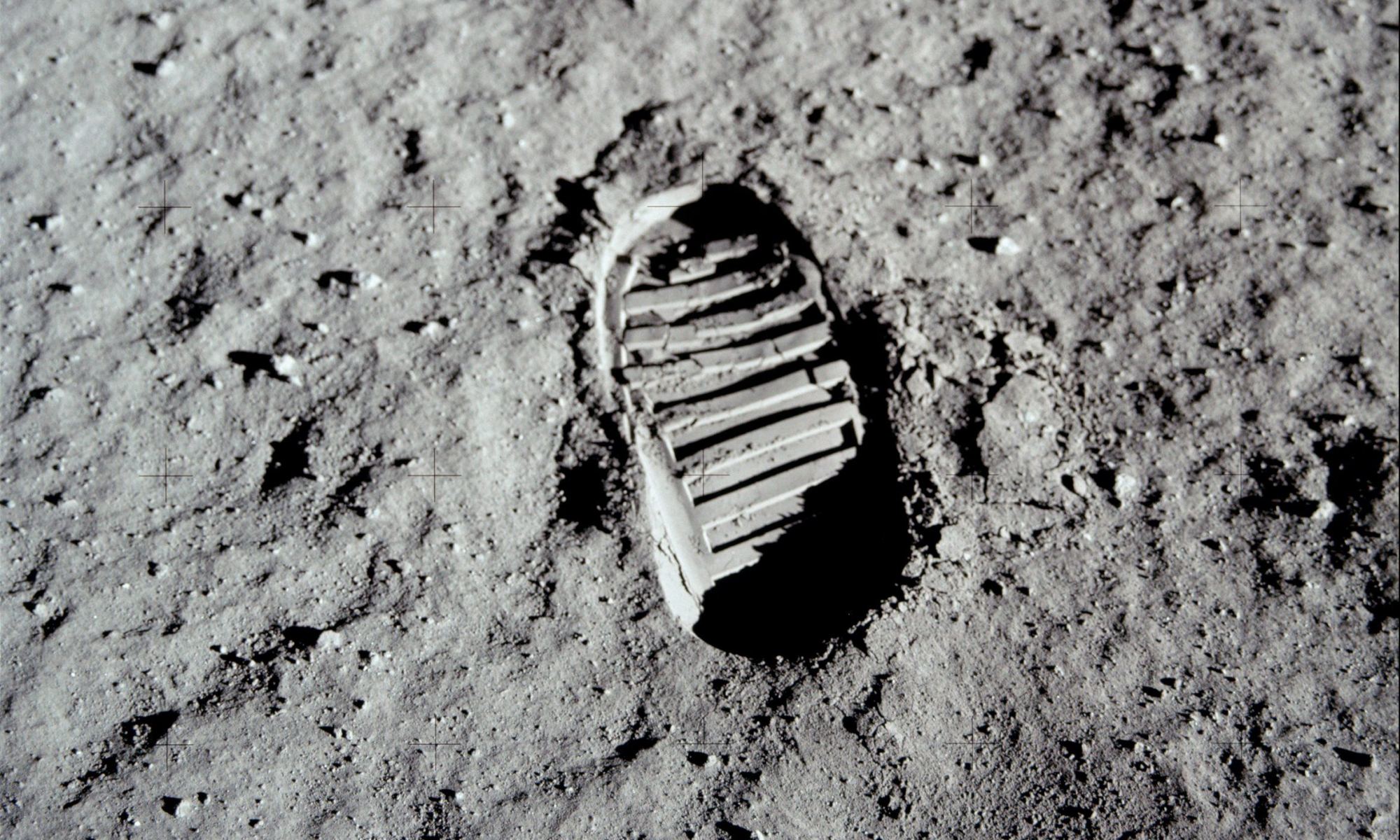
In the coming years, NASA will be sending astronauts to the Moon for the first time since the Apollo Era. This time, and as part of the Artemis Program, NASA also plans to build the necessary infrastructure to establish a sustained human presence on the Moon and eventually missions to Mars – including the Artemis Base Camp and the orbiting Lunar Gateway.
They’ll be getting some new equipment, such as the exploration Extravehicular Mobility Unity (xEMU) spacesuit and a fancy new lunar lander. Of course, as the Artemis astronauts will also have to deal with the same hazards as their predecessors – not the least of which is lunar dust (or regolith). Luckily, NASA is investigating a possible solution in the form of a handheld electron/ultraviolet (UV) device that could mitigate this hazard.
Continue reading “Astronauts Could Dust off Themselves and Equipment on the Moon With an Electron Beam”Who Were the First Men on the Moon?
On July 20th, 1969, history was made when men walked on the Moon for the very first time. The result of almost a decade’s worth of preparation, billions of dollars of investment, strenuous technical development and endless training, the Moon Landing was the high point of the Space Age and the single greatest accomplishment ever made.
Because they were the first men to walk on the Moon, Neil Armstrong and Edwin “Buzz” Aldrin are forever written in history. And since that time, only ten men have had the honor of following in their footsteps. But with plans to return to the Moon, a new generation of lunar explorers is sure to be coming soon. So just who were these twelve men who walked on the Moon?
Prelude to the Moon Landing:
Before the historic Apollo 11 mission and Moon Landing took place, NASA conducted two manned missions to test the Apollo spacecraft and the Saturn V rockets that would be responsible for bringing astronauts to the lunar surface. The Apollo 8 mission – which took place on Dec. 21st, 1968 – would be the first time a spacecraft left Earth orbit, orbited the Moon, and then returned safely to Earth.
During the mission, the three-astronaut crew – Commander Frank Borman, Command Module Pilot James Lovell, and Lunar Module Pilot William Anders – spent three days flying to the Moon, then completed 10 circumlunar orbits in the course of 20 hours before returning to Earth on Dec. 27th.
During one of their lunar orbits, the crew made a Christmas Eve television broadcast where they read the first 10 verses from the Book of Genesis. At the time, the broadcast was the most watched TV program in history, and the crew was named Time magazine’s “Men of the Year” for 1968 upon their return.
On May 18th, 1969, in what was described as a “dress rehearsal” for a lunar landing, the Apollo 10 mission blasted off. This involved testing all the components and procedures that would be used for the sake of the Moon Landing.
The crew – which consisted of Thomas P. Stafford as Commander, John W. Young as the Command Module Pilot, and Eugene A. Cernan as the Lunar Module Pilot – flew to the Moon and passed within 15.6 km (8.4 nautical miles) of the lunar surface before returning home.
Apollo 11:
On July 16th, 1969, at 13:32:00 UTC (9:32:00 a.m. EDT local time) the historic Apollo 11 mission took off from the Kennedy Space Center in Florida. The crew consisted of Neil Armstrong as the Commander, Michael Collins as the Command Module Pilot), and Edwin “Buzz” Aldrin as the Lunar Module Pilot.

On July 19th at 17:21:50 UTC, Apollo 11 passed behind the Moon and fired its service propulsion engine to enter lunar orbit. On the following day, the Lunar Module Eagle separated from the Command Module Columbia, and Armstrong and Aldrin commenced their Lunar descent.
Taking manual control of the Lunar Module, Armstrong brought them down to a landing spot in the Sea of Tranquility, and then announced their arrival by saying: “Houston, Tranquility Base here. The Eagle has landed.” After conducting post-landing checks and depressurizing the cabin, Armstrong and Aldrin began descending the ladder to the lunar surface.
When he reached the bottom of the ladder, Armstrong said: “I’m going to step off the LEM now” (Lunar Excursion Module). He then turned and set his left boot on the surface of the Moon at 2:56 UTC July 21st, 1969, and spoke the famous words “That’s one small step for [a] man, one giant leap for mankind.”
About 20 minutes after the first step, Aldrin joined Armstrong on the surface, and the two men began conducting the planned surface operations. In so doing, they became the first and second humans to set foot on the Moon.
Apollo 12:
Four months later, on November 14th, 1969, the Apollo 12 mission took off from the Kennedy Space Center. Crewed by Commander Charles “Pete” Conrad, Lunar Module Pilot Alan L. Bean and Command Module Pilot Richard F. Gordon, this mission would be the second time astronauts would walk on the Moon.
Ten days later, the Lunar Module touched down without incident on the southeastern portion of the Ocean of Storms. When Conrad and Bean reached the lunar surface, Bean’s first words were: “Whoopie! Man, that may have been a small one step for Neil, but that’s a long one for me.” In the course of conducting a Extra-Vehicular Activities (EVAs), the two astronauts became the third and fourth men to walk on the Moon.
The crew also brought the first color television camera to film the mission, but transmission was lost after Bean accidentally destroyed the camera by pointing it at the Sun. On one of the two EVAs, the crew visited the Surveyor 3 unmanned probe, which had landed in the Ocean of Storms on April 20th, 1967. The mission ended on November 24th with a successful splashdown.
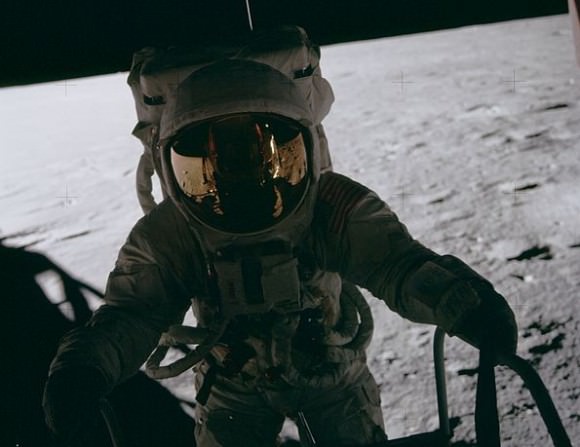
Apollo 14:
The Apollo 13 mission was intended to be the third lunar landing; but unfortunately, the explosion of the oxygen tank aboard the Service Module forced the crew to abort the landing. Using the Lunar Module as a “lifeboat”, the crew executed a single loop around the Moon before safely making it back to Earth.
As a result, Apollo 14 would be the third manned mission to the lunar surface, crewed by veteran Alan Shepard (as Commander), Stuart Roosa as Command Module Pilot, and Edgar Mitchell as Lunar Module Pilot. The mission launched on January 31st, 1971 and Shepard and Mitchell made their lunar landing on February 5th in the Fra Mauro formation, which had originally been targeted for the Apollo 13 mission.
During two lunar EVAs, Shepard and Mitchell became the fifth and sixth men to walk on the Moon. They also collected 42 kilograms (93 lb) of Moon rocks and conducted several surface experiments – which including seismic studies. During the 33 hours they spent on the Moon (9½ hours of which were dedicated to EVAs), Shepard famously hit two golf balls on the lunar surface with a makeshift club he had brought from Earth.
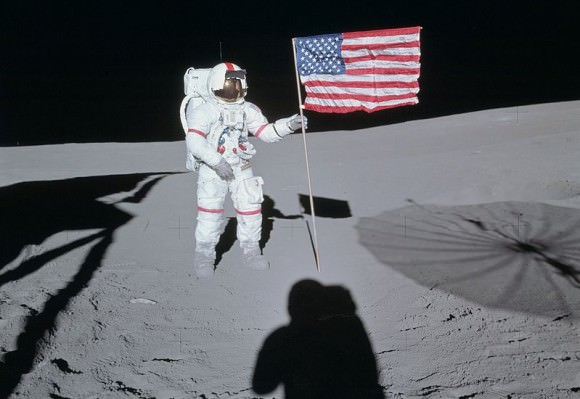
Apollo 15:
The seventh and eight men to walk on the Moon were David R. Scott, and James B. Irwin – the Commander and Lunar Module Pilot of the Apollo 15 mission. This mission began on July 26th, 1971, and landed near Hadley rille – in an area of the Mare Imbrium called Palus Putredinus (Marsh of Decay) – on August 7th.
The mission was the first time a crew explored the lunar surface using a Lunar Vehicular Rover (LVR), which allowed them to travel farther and faster from the Lunar Module (LM) than was ever before possible. In the course of conducting multiple EVAs, the crew collected 77 kilograms (170 lb) of lunar surface material.
While in orbit, the crew also deployed a sub-satellite, and used it and the Scientific Instrument Module (SIM) to study the lunar surface with a panoramic camera, a gamma-ray spectrometer, a mapping camera, a laser altimeter, and a mass spectrometer. At the time, NASA hailed the mission as “the most successful manned flight ever achieved.”
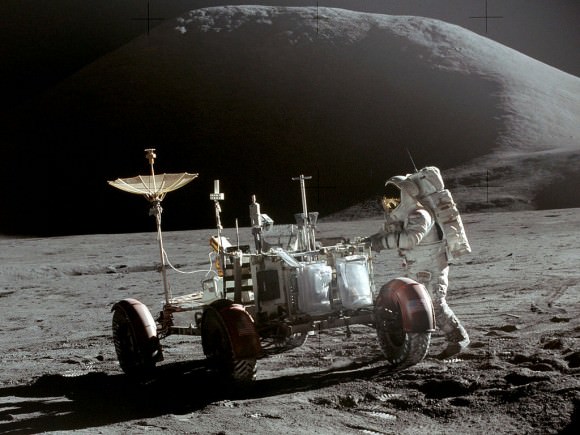
Apollo 16:
It was during the Apollo 16 mission – the penultimate manned lunar mission – that the ninth and tenth men were to walk on the Moon. After launching from the Kennedy Space Center on April 16th, 1972, the mission arrived on the lunar surface by April 21st. Over the course of three days, Commander John Young and Lunar Module Pilot Charles Duke conducted three EVAs, totaling 20 hours and 14 minutes on the lunar surface.
The mission was also the second occasion where an LVR was used, and Young and Duke collected 95.8 kilograms (211 lb) of lunar samples for return to Earth, while Command Module Pilot Ken Mattingly orbited in the Command/Service Module (CSM) above to perform observations.
Apollo 16’s landing spot in the highlands was chosen to allow the astronauts to gather geologically older lunar material than the samples obtained in the first four landings. Because of this, samples from the Descartes Cayley Formations disproved a hypothesis that the formations were volcanic in origin. The Apollo 16 crew also released a subsatellite from the Service Module before breaking orbit and returning to Earth, making splashdown by April 27th.

Apollo 17:
The last of the Apollo missions, and the final time astronauts would set foot on the moon, began at 12:33 am Eastern Standard Time (EST) on December 7th, 1972. The mission was crewed by Eugene Cernan, Ronald Evans, and Harrison Schmitt – in the roles of Commander, Command Module Pilot and Lunar Module Pilot, respectively.
After reaching the lunar surface, Cernan and Schmitt conducted EVAs and became the eleventh and twelve men to walk on the lunar surface. The mission also broke several records set by previous flights, which included the longest manned lunar landing flight, the longest total lunar surface extravehicular activities, the largest lunar sample return, and the longest time in lunar orbit.
While Evans remained in lunar orbit above in the Command/Service Module (CSM), Cernan and Schmitt spent just over three days on the lunar surface in the Taurus–Littrow valley, conducting three periods of extra-vehicular activity with an LRV, collecting lunar samples and deploying scientific instruments. Cernan, After an approximately 12 day mission, Evans, and Schmitt returned to Earth.

Apollo 17 remains the most recent manned Moon mission and also the last time humans have traveled beyond low Earth orbit. Until such time as astronauts begin to go to the Moon again (or manned missions are made to Mars) these twelve men – Neil Armstrong, Edwin “Buzz” Aldrin, Charles “Pete” Conrad, Alan L. Bean, Alan Shepard, Edgar Mitchell, David R. Scott, James B. Irwin, John Young, Charles Duke, Eugene Cernan, and Harrison Schmitt – will remain the only human beings to ever walk on a celestial body other than Earth.
Universe today has many interesting articles on the Moon, such as the First Man On The Moon, The Most Famous Astronauts, and articles on Neil Armstrong, Edwin “Buzz” Aldrin and Alan Shepard.
You should also check out the Moon landing and 35th anniversary of the Moon landing.
Astronomy Cast has a three part series on the Moon.
Reference:
NASA Apollo 11


